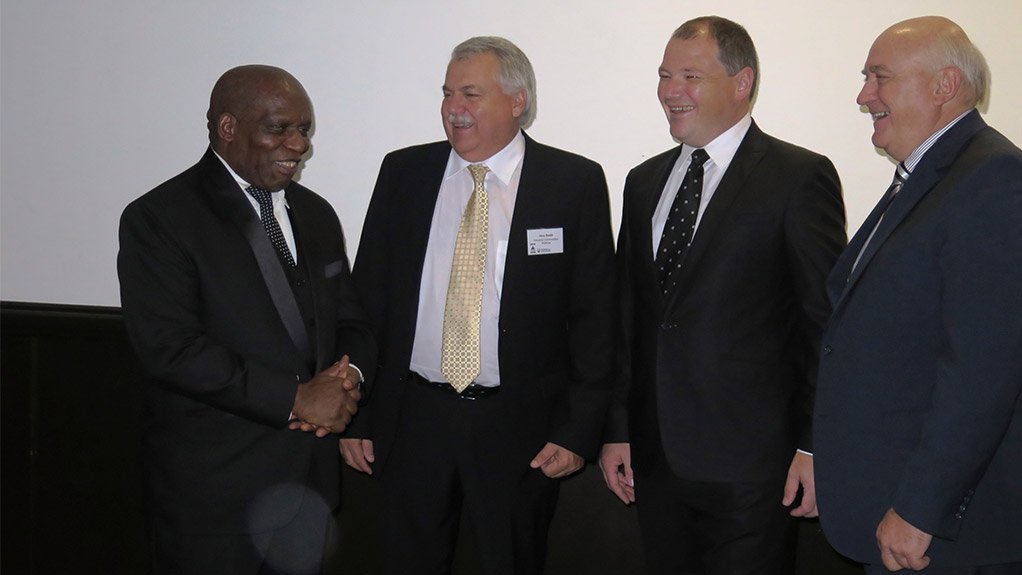Subsistence farmers not the answer to Africa’s food security – agri economist
The production of food by small subsistence farmers would never be the solution to food insecurity and poverty eradication in Africa, independent agricultural economist Fanie Brink stressed.
Speaking at the Fertiliser Association of Southern Africa (Fertasa) annual congress in Cape Town, he noted that in many cases small subsistence farmers were struggling to make a living and that this sector had not been the solution in the past nor would it be the solution in future.
"No farmer in the world, irrespective of the size of his farm, can make a contribution to food security if he cannot produce food profitably and sustainably. The time has now arrived for everybody involved in the process of achieving food security in Africa to acknowledge and accept this reality," Brink emphasised.
There were 870-million people estimated to be undernourished in Africa, with 60% being small subsistence farmers.
With regard to South Africa, Brink said the generally accepted goals of government, namely land distribution and the development of smallholder farmers on the one hand and food security on the other hand, could never be compatible.
“This is mainly because there is no possibility that smallholder farmers can make a meaningful contribution to food security if they cannot produce food profitably and sustainably,” he argued.
In contrast, also speaking at the congress, Minister of Agriculture, Forestry and Fisheries Senzeni Zokwana said there was a need for greater collaboration between government and the fertiliser industry with regard to empowering small-scale farmers to ensure their contribution to food security. He also highlighted the need for research and development (R&D) and fertiliser exports to the rest of Africa and used the opportunity to state that “no farmer will lose his land as a result of the land reform policy.”
Fertasa CEO Adam Mostert advised that it was often claimed by various influential sources that Africa had the potential to produce enough food to feed its population and leave a surplus for exports. However, he stressed that people “don’t eat potential, they eat what is actually produced,” which was currently not enough, as millions were starving and malnourished in Africa.
“Africa spends $35-billion a year on food imports. There must be a change in food production. Without change more will die of hunger."
Mostert mentioned that when recently attending the African Green Revolution Forum, in Addis Ababa, in Ethiopia, which was hosted by the Kofi Annan Foundation, urgently needed actionable steps were identified for Africa to achieve its food potential.
These included the expansion of the food and agribusiness sector in Africa, investment in critical infrastructure and investment in agriculture by governments not because it was the right thing to do but because it was the smart thing to do.
The implementation of policies to promote land tenure security to raise productivity and sustainability was also highlighted, as well as the need to increase access to financial services and the prioritisation of climate solutions.
Republic of Zambia MP and former acting president Dr Guy Scott said minimum tillage had the potential to increase maize yields in Zambia for smallholder and commercial farmers.
Much R&D had been done to eliminate losses incurred through late planting, inaccurate seeding, excessive weed competition, inaccuracy in placing nutrients and poor water retention, he explained, noting that these challenges could lead to yield losses of 65%.
“Commercial companies involved with synthetic fertilisers should take a keen interest in the broader context in which fertiliser is being used, especially by smallholder farmers, to secure a more efficient future," Scott stated.
Much of the fertiliser distributed each year ended up in the hands of influential people, including civil servants and the local political elite, who “fronted” as leaders of cooperatives whose members – smallholder farmers¬ – did not get the fertiliser that was intended for them. Thus, fertiliser distribution in Zambia led to a minority of medium-scale farmers producing the larger share of the maize through corruption, Scott noted.
Meanwhile, any substantial farm employment growth in South Africa would have to come from additional land under irrigation, from improved livelihoods and increased employment in the communal farming areas. Industries with the largest potential contribution to job creation were mostly irrigation-based, said Stellenbosch University Department of Agricultural Economy chairperson Professor Nick Vink.
He added that South Africa currently cultivated about 13-million hectares of agricultural land. However, the available arable land was about 15-million hectares, leaving two-million hectares, mostly in the former homelands, available for expansion.
"About 300 000 employment opportunities can be created in the communal areas where close to 1.3-million households have access to land. The less labour-intensive field crop sector can potentially create 10 000 on-farm opportunities. In total, the number of primary and secondary jobs created could top 900 000," Vink said.
FERTASA CODE OF CONDUCT
To establish the fertiliser industry as a recognised and preferred body aimed at promoting the image of the industry, Fertasa, whose membership had increased from 28 last year to 42, established a framework of self regulation.
This included subscription to a code of conduct and compliance audits as well as subsequent accreditation for its members in compliance with international standards, said Fertasa chairperson and Omnia Fertiliser MD Adriaan de Lange.
Presenting his annual report at the fifty-fifth Fertasa congress in Cape Town, he pointed out that Afri Compliance had been contracted to implement the code of conduct compliance.
De Lange stated that the purpose of the code of conduct compliance service was to create, sustain and monitor an ethical culture of compliance, integrity and trust within the fertiliser industry.
Once deemed compliant, a member would receive a certificate. The first certificate was handed to Metson Manufacturing CEO Tom Mason.
Meanwhile, the Department of Agriculture, Forestry and Fisheries had agreed to a separate Fertiliser Bill.
Fertasa noted that the regulation of the fertiliser industry was necessary to protect the environment, consumers of food produced using fertiliser and crop producers against dubious suppliers.
Proposed changes to the regulations of Act 36 of 1947 to control the use of zinc-ash as a key source in fertiliser products had been presented to the Registrar.
Fertasa had also drafted guidelines for the registration of Group 3 fertilisers, as no clear guidelines existed.
De Lange said to cut delays members and nonmembers were being assisted with product registration applications for submission to the Registrar.
Zokwana, meanwhile, called on Fertasa to engage more frequently with him to address the challenges faced by the industry.
“There are already areas, particularly regulatory issues, in which the industry and government collaborate. Government recognises that to continue to ensure food security in South Africa, we will need to work in a collaborative effort,” he added.
Comments
Press Office
Announcements
What's On
Subscribe to improve your user experience...
Option 1 (equivalent of R125 a month):
Receive a weekly copy of Creamer Media's Engineering News & Mining Weekly magazine
(print copy for those in South Africa and e-magazine for those outside of South Africa)
Receive daily email newsletters
Access to full search results
Access archive of magazine back copies
Access to Projects in Progress
Access to ONE Research Report of your choice in PDF format
Option 2 (equivalent of R375 a month):
All benefits from Option 1
PLUS
Access to Creamer Media's Research Channel Africa for ALL Research Reports, in PDF format, on various industrial and mining sectors
including Electricity; Water; Energy Transition; Hydrogen; Roads, Rail and Ports; Coal; Gold; Platinum; Battery Metals; etc.
Already a subscriber?
Forgotten your password?
Receive weekly copy of Creamer Media's Engineering News & Mining Weekly magazine (print copy for those in South Africa and e-magazine for those outside of South Africa)
➕
Recieve daily email newsletters
➕
Access to full search results
➕
Access archive of magazine back copies
➕
Access to Projects in Progress
➕
Access to ONE Research Report of your choice in PDF format
RESEARCH CHANNEL AFRICA
R4500 (equivalent of R375 a month)
SUBSCRIBEAll benefits from Option 1
➕
Access to Creamer Media's Research Channel Africa for ALL Research Reports on various industrial and mining sectors, in PDF format, including on:
Electricity
➕
Water
➕
Energy Transition
➕
Hydrogen
➕
Roads, Rail and Ports
➕
Coal
➕
Gold
➕
Platinum
➕
Battery Metals
➕
etc.
Receive all benefits from Option 1 or Option 2 delivered to numerous people at your company
➕
Multiple User names and Passwords for simultaneous log-ins
➕
Intranet integration access to all in your organisation




















